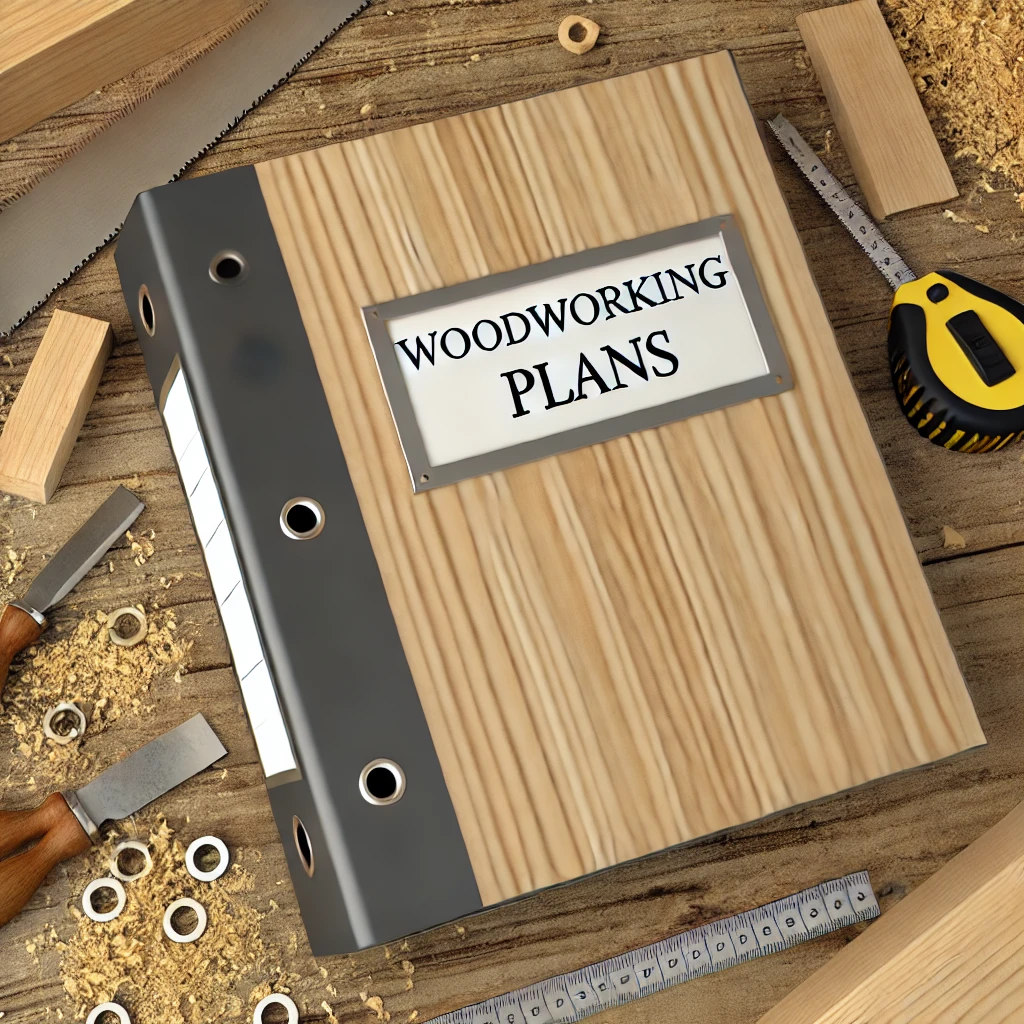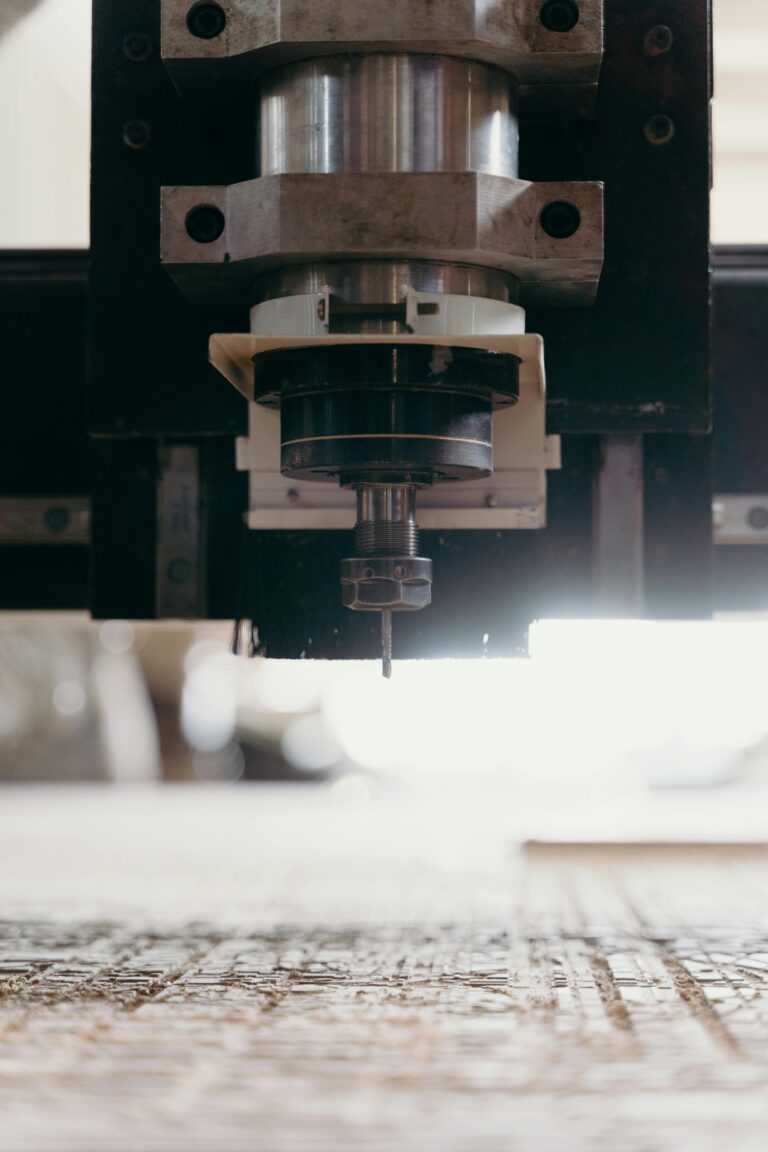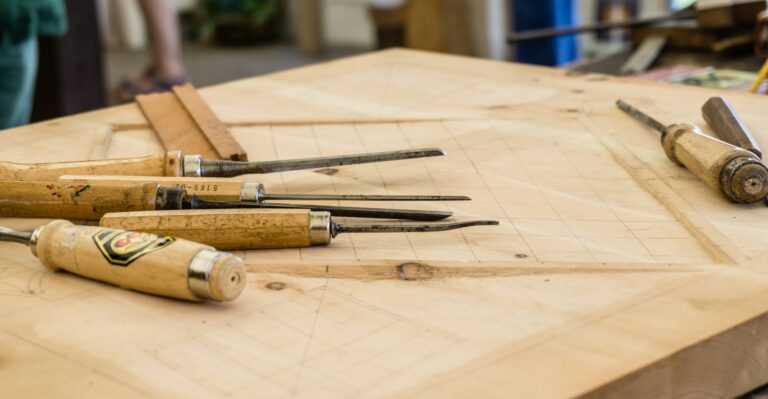The Ultimate Guide to Woodworking Plans in 2024:
Introduction:
Woodworking plans are the backbone of every great project. Whether you’re crafting a simple shelf or a complex piece of furniture, a solid plan can make all the difference! Did you know that professional woodworkers spend nearly 60% of their time on planning and preparation? In this guide, we’ll dive deep into the world of woodworking plans, showing you the best strategies, where to find top-notch blueprints, and how to modify plans for your unique projects. Whether you’re a beginner or an expert, these tips will ensure you get the most out of your woodworking ventures.
What Are Woodworking Plans and Why Do You Need Them?
- Definition of woodworking plans and their role in the project: Woodworking plans serve as a detailed roadmap for building projects. They include precise measurements, a materials list, and step-by-step instructions to guide you through the construction process. By following a well-laid-out plan, you can reduce the risk of making mistakes and wasting valuable materials. Plans are crucial for ensuring that your project stays on track, meets your design goals, and results in a professional-quality finish.
- The importance of having a detailed plan before starting any woodworking project: Diving into a woodworking project without a clear plan is like sailing without a map—you may end up lost and frustrated. A detailed woodworking plan outlines each step you need to take, helping you avoid unnecessary mistakes and ensuring your project progresses smoothly. With a plan, you can anticipate potential problems, gather the right materials beforehand, and work with confidence, knowing you won’t miss any critical details.
- Key components of a woodworking plan: materials list, measurements, and steps: Every effective woodworking plan includes three main components: a comprehensive materials list, precise measurements, and clear step-by-step instructions. The materials list ensures you have everything on hand before you start, saving you time and trips to the store. Accurate measurements are critical for ensuring that each piece fits together perfectly, while detailed steps guide you through the construction process. Without these components, even experienced woodworkers can struggle to complete a project efficiently.
- How woodworking plans can save time and reduce errors: Having a woodworking plan is not only about staying organized but also about saving time and reducing errors. With a plan, you won’t have to stop mid-project to figure out the next step or make adjustments because something didn’t fit. You’ll know exactly what to do and when to do it. This efficiency can cut project time in half and prevent costly mistakes like cutting the wrong size or purchasing unnecessary materials.
Types of Woodworking Plans You Should Know
- Overview of different woodworking plan categories: furniture, outdoor structures, home décor, and more: Woodworking plans come in a wide range of categories, each suited for different types of projects. Furniture plans, for instance, help you create everything from simple coffee tables to elaborate wardrobes. Outdoor structures like garden sheds, pergolas, and even playhouses can also be constructed with the help of specialized plans. For home décor enthusiasts, there are plans for shelves, picture frames, and more. Choosing the right category is key to finding a plan that suits your needs and skill level.
- How to choose the right plan based on your skill level: Not all woodworking plans are created equal, and the complexity of a plan should match your woodworking experience. If you’re a beginner, it’s best to start with simpler projects like a bookshelf or birdhouse to familiarize yourself with basic techniques. More experienced woodworkers can tackle intricate projects like cabinetry or large outdoor structures. The best plans for your skill level will include clear instructions, manageable steps, and require tools you’re comfortable using.
- Pros and cons of free vs. paid woodworking plans: There are thousands of free woodworking plans available online, but are they always the best option? Free plans are great for saving money, but they often lack detailed instructions or accurate measurements, which can lead to confusion or mistakes. Paid plans, on the other hand, are typically created by professionals and offer detailed, step-by-step instructions, material lists, and even videos. The choice between free and paid plans depends on the complexity of your project and how much guidance you need.
- Where to find high-quality woodworking plans online and in books: The internet is filled with resources for woodworking plans, but not all are of high quality. Websites like Fine Woodworking, Wood Magazine, and Ana White offer reputable, easy-to-follow plans. Additionally, platforms like Etsy provide plans created by individual woodworkers. For those who prefer physical copies, books such as The Complete Manual of Woodworking or Woodworker’s Guide to Joinery are invaluable resources. Both online and offline, it’s important to choose plans that offer clear guidance and reliable measurements.
Essential Tools and Materials for Following Woodworking Plans
- A comprehensive list of must-have tools for executing woodworking plans: To execute a woodworking plan successfully, you need to have the right tools on hand. Essential tools include saws (circular, jigsaw, and table saws), drills, clamps, and sanders. Hand tools like chisels, mallets, and planes are also critical for detailed work. Power tools can make the process faster, but hand tools are indispensable for achieving precision and finesse. Without the right equipment, even the best woodworking plans can’t be properly executed.
- How to choose the best wood for your projects (types of wood and their characteristics): Selecting the right wood is one of the most important decisions in any woodworking project. Softwoods like pine and cedar are great for beginner projects due to their affordability and ease of use. Hardwoods like oak, maple, and walnut, while more expensive, offer superior durability and a polished finish, making them ideal for furniture. It’s also important to consider wood grain and moisture content, as these factors affect the wood’s stability and appearance once the project is complete.
- The importance of safety equipment when working on woodworking projects: Woodworking involves sharp tools and potentially hazardous machinery, making safety equipment non-negotiable. Safety goggles, dust masks, and ear protection are essential to protect yourself from flying debris, dust inhalation, and loud noises. Gloves and proper footwear can prevent injuries from splinters and falling objects. No matter how experienced you are, neglecting safety precautions can lead to accidents, so always ensure your workspace is equipped with the necessary protective gear.
- Tips on maintaining your tools to ensure they work well with any plan: Well-maintained tools are key to executing woodworking plans with precision. Dull blades and bits not only slow down your work but can also cause your cuts to be inaccurate. Regular sharpening, oiling, and cleaning of your tools will ensure that they perform as expected. Additionally, checking your power tools for loose wires or worn-out parts before beginning any project can prevent breakdowns and maintain consistent quality throughout your work.
How to Customize Woodworking Plans for Your Unique Projects
- Why you might want to modify an existing woodworking plan: Sometimes, the perfect woodworking plan isn’t readily available, or you might want to adapt an existing plan to suit your specific needs. Customizing a plan allows you to adjust dimensions to fit a particular space, change materials based on what’s available, or add unique design elements that reflect your style. Personalizing a plan gives you greater creative freedom and ensures the finished product aligns with your vision.
- Step-by-step guide to adjusting dimensions, materials, and design details: Modifying a woodworking plan requires careful consideration and precision. Start by recalculating the measurements to fit the new dimensions of your project. This is especially important if you’re working in a space-constrained area or using different materials. When adjusting materials, ensure that the new ones can handle the same weight and stress. Lastly, tweaking design details—like changing drawer fronts or altering a table leg—can help make the plan truly your own while still adhering to the structure.
- The role of software and tools (like CAD) in customizing plans: In today’s tech-driven world, there are several digital tools available to help you modify woodworking plans with ease. Programs like CAD (Computer-Aided Design) software allow you to visualize the changes you’re making before cutting into wood. This can prevent costly mistakes and help you understand the spatial relationships between different parts of the project. Using such software also lets you make highly accurate adjustments to the dimensions and design, ensuring a professional result.
- Tips for beginners on starting small with plan modifications: If you’re new to woodworking, it can be tempting to dive into complex modifications, but it’s best to start small. Begin with minor adjustments like resizing or swapping out materials. Once you’re comfortable with basic changes, gradually work your way up to more intricate modifications, like adding custom details or merging elements from multiple plans. Taking baby steps ensures you build confidence and understanding before tackling larger, more complicated alterations.
Top 10 Woodworking Plans for Beginners in 2024
- A curated list of simple yet rewarding woodworking projects for beginners: When starting out, it’s crucial to pick projects that are not overly complicated but still provide a sense of achievement. Beginner projects such as a simple bookshelf, birdhouse, or picture frame teach you the fundamentals of cutting, assembling, and finishing wood. Each of these projects is easy to complete in a short amount of time and doesn’t require extensive experience or advanced tools, making them perfect for those new to woodworking.
- Why these projects are perfect for learning woodworking basics: The woodworking plans included in this list offer an excellent balance of challenge and simplicity. These beginner projects help you build foundational skills, like measuring, cutting, and joining wood pieces. They also introduce you to the most essential tools in a woodworker’s toolkit, such as the hand saw, power drill, and sander. As you progress through these simple projects, you will start to develop the confidence needed to take on more complex plans.
- Key tools and materials needed for each project: For most beginner projects, you’ll need basic tools such as a hand saw, power drill, clamps, and a sander. Wood glue and screws are often used for joining parts, while sandpaper or an orbital sander ensures a smooth finish. Materials typically include pine or plywood, which are inexpensive and easy to work with. Keeping the tools and materials simple allows beginners to focus on technique rather than troubleshooting complex setups.
- Links to detailed plans and instructions for each project: The internet is filled with free resources that provide detailed woodworking plans, especially for beginners. Websites like Ana White, Woodworking for Mere Mortals, and Instructables are fantastic starting points. These platforms offer free step-by-step guides that include everything from material lists to video instructions, ensuring you have all the support you need to complete your project successfully.
Advanced Woodworking Plans for Experienced Craftsmen
- An overview of more complex woodworking plans for skilled woodworkers: As your woodworking skills progress, you’ll want to tackle more advanced projects that challenge your abilities and expand your expertise. Advanced woodworking plans often include projects like custom cabinetry, dining tables, and intricate joinery. These projects require a deeper understanding of woodworking techniques, as well as precision in cutting and assembly. Advanced plans offer the opportunity to hone your craft and create impressive, large-scale pieces.
- How to approach large-scale projects like cabinets, dining tables, and outdoor structures: Large-scale woodworking projects require careful planning and organization. Start by breaking down the project into smaller, manageable tasks, such as cutting all pieces to size, assembling the base, and then moving onto details like doors or hardware. It’s also important to allocate plenty of space to work in and ensure that your tools are in top condition before beginning. For large projects, accuracy is key, so take extra care with measurements and joinery.
- Key skills you’ll need to master for advanced woodworking: Advanced woodworking projects require mastery of several skills, including advanced joinery techniques (like dovetail or mortise and tenon joints), proficiency in using power tools such as a router or table saw, and an understanding of how to read and interpret detailed woodworking plans. In addition, knowing how to work with high-quality hardwoods and creating fine finishes is essential for producing professional-level results. These skills can take years to develop, but they’re crucial for success in more complex projects.
- Tips on troubleshooting common problems with complicated plans: Even the most experienced woodworkers encounter problems when working with complex plans. Misaligned joints, uneven surfaces, or wood warping are common issues that can arise. To troubleshoot, always double-check measurements and pre-fit pieces before applying glue. If you make a mistake, don’t panic! Many issues can be corrected by adjusting measurements slightly, sanding down uneven edges, or using wood fillers. Having a plan B is always helpful when working on challenging projects.
How to Read and Understand Woodworking Plans Like a Pro
- A guide to interpreting technical drawings, symbols, and terminology used in woodworking plans: Woodworking plans often include technical drawings, symbols, and terminology that can be confusing for beginners. Learning how to interpret these elements is essential for success. Technical drawings provide a visual representation of the finished product and often include measurements in both imperial and metric systems. Symbols, like those representing different types of joints, cuts, or fasteners, are common in professional plans. Understanding these symbols and terms will enable you to read any plan with ease.
- Common mistakes to avoid when reading plans: One of the most common mistakes when reading woodworking plans is misinterpreting measurements. Always double-check both the units of measurement and the scale of the plan before cutting any materials. Another frequent error is skipping steps or assuming you understand what comes next. Follow the plan in the order it’s written, and if something is unclear, take the time to research or ask questions. Being thorough and methodical when reading plans is the best way to avoid costly mistakes.
- How to measure accurately and follow steps in sequence: Accurate measurements are the cornerstone of successful woodworking. Before making any cuts, measure each piece of wood twice to ensure precision. This is especially important when working with expensive materials like hardwoods, where mistakes can be costly. Following the steps in sequence is also crucial. Many plans are written to ensure the structural integrity of the piece, so skipping a step can weaken the project or cause components to not fit together as intended.
- Tips for practicing plan reading and improving your skills over time: Just like any other skill, becoming proficient at reading woodworking plans takes practice. Start with simple projects and gradually work your way up to more complex plans. Over time, you’ll become familiar with common symbols, terminology, and the flow of instructions. Additionally, reviewing the plans of completed projects can help reinforce what you’ve learned. Practice interpreting different types of plans, such as those for furniture, cabinetry, and outdoor structures, to broaden your understanding and versatility.
Common Mistakes to Avoid When Using Woodworking Plans
- Top 5 mistakes beginners make when following woodworking plans: Beginners often make a few common mistakes when following woodworking plans. These include failing to read the entire plan before starting, skipping over critical measurements, using the wrong type of wood, and underestimating the tools required. Additionally, not allowing for wood expansion and contraction can lead to ill-fitting joints or warped pieces. Understanding these pitfalls and how to avoid them will set you up for success as you embark on your woodworking journey.
- How to avoid material waste and errors in measurements: Wood is a valuable resource, and wasting it can be costly. The key to avoiding material waste is double-checking measurements before making cuts. It’s also helpful to create a mock-up or practice cut on scrap wood if you’re unsure about a particular step. Investing in quality measuring tools, such as a combination square or digital caliper, can also ensure precision. When cutting, always leave a little extra material, as it’s easier to trim excess than to correct a piece that’s too short.
- The importance of double-checking your work at each step: Even if you’re confident in your skills, it’s always a good idea to double-check your work at each step of the project. Before moving on to the next stage, review what you’ve done to ensure that everything is aligned and assembled correctly. This will help catch errors early, when they’re easier to fix, and prevent larger issues down the line. Taking a few extra minutes to check your work can save you hours of frustration and rework later on.
- How to deal with mistakes when they happen and how to fix them: Mistakes are inevitable in woodworking, but how you deal with them can make all the difference. If you make an error, take a step back and assess the situation calmly. Minor issues, like a misaligned joint or small gap, can often be fixed with wood filler or by adjusting nearby pieces. For larger mistakes, like cutting a piece too short, it may be necessary to recut the part or adjust the design slightly. Always have extra materials on hand to account for such problems.
Where to Find the Best Woodworking Plans in 2024
- A list of websites, books, and resources that offer high-quality woodworking plans: Whether you’re looking for free or premium woodworking plans, there are countless resources available to help you find the perfect blueprint. Websites like Fine Woodworking, The Spruce Crafts, and Instructables offer a wide variety of plans for projects of all skill levels. Paid platforms such as Wood Magazine and TedsWoodworking provide comprehensive, professionally designed plans. For those who prefer books, titles like The Complete Manual of Woodworking and The Woodworker’s Bible are excellent references.
- How to evaluate if a plan is worth following: Not all woodworking plans are created equal, so it’s essential to evaluate the quality before committing to one. Look for plans that include detailed measurements, a clear materials list, and step-by-step instructions.
- As these can lead to confusion. User reviews are also helpful—if many people have successfully completed the project using the plan, it’s a good indicator that the plan is reliable and worth following.
- The benefits of joining woodworking communities for plan sharing and advice: Joining woodworking communities, whether online or in person, can be incredibly beneficial. Not only can you share plans with other woodworkers, but you can also get advice, feedback, and inspiration. Online forums like Reddit’s r/Woodworking or specialized groups on Facebook offer a wealth of knowledge from experienced woodworkers who are happy to help beginners. Being part of a community also gives you access to a wide variety of plans, tools, and techniques you might not discover on your own.
- Paid vs. free plans: which is better for your needs?






